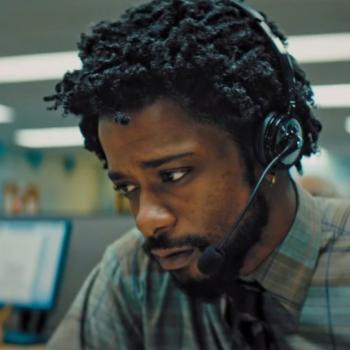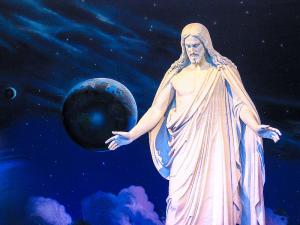Just when we thought the Romneys’ exeunt might take the spotlights off, the Church thrust itself right back into center stage last week with MormonsandGays.org. Headlines in news publications asked if this site signified an eventual change in the church’s policy, and members pondered the significance of an active and obvious–if chaste– LGBTQ community within the body of the church itself.
Some of the headlines are a little overblown: after all, very little here is different from what we heard unofficially in the aftermath of Prop 8, which is that despite the church’s stance on same-sex attraction, members should love and embrace our brothers, sisters, and children no matter their sexual attraction. For a twentysomethinglike myself, to whom previous generations’ history of ‘pray the gay away’ programs and the encouragement to marry at all costs remain largely that—history–, looking at this site is something of a ‘duh’ moment. God bless a short memory.
What’s more interesting to me is the liberality at play. I don’t mean that in the lefty political sense, I’m speaking of the mental liberality, or generousness, that allows a person or organization to accept even what it might find distasteful, in service to grander humanistic or moral ideals. Consider the church’s acceptance of birth control, or the American repeal of Prohibition. Better, the thinking goes, to accept some social or doctrinal cost, in order to make room for a higher goal. (NB: To clarify, I don’t believe that birth control is distasteful. But until recently, the church found it so.) In the case of these examples, that higher goal might be (depending on who you ask) a humanistic recognition of the rights and agency of the individual, or the exorbitant social cost of unwanted pregnancy, or the detrimental economic impact of black market for alcohol. Eventually, the idea that things were ever anything different seems strange.
In some cases, the higher goal may be merely the survival of the organization. Nate Oman has argued that the church’s repeal of the priesthood ban in 1978 may have been motivated at least in part by such a concern: “By 1978, I think it is safe to say that the vast majority of members wanted the change, longed for the change, were praying for the change.” To hold the hard doctrinal line would have been, as Oman says, “Ecclesiastically…. deeply destructive.”
Of course, the opposite is also true: to push for change when the membership is not ready for it risks more of schism and sectarianism that has marked Christianity for much of the last 2,000 years.
So, there are good reasons for doctrinal wiggle room, particularly for a church whose version of Christianity encourages a welcoming of ALL God’s children, however flawed, impoverished, degenerate, or difficult. Nearly any Mormon leader, lay or apostolic, would surely agree that to minister is greater than to condemn.
However, to claim this moral high ground, there must be proof of concept, ie., the flourishing of a distasteful thing in the midst of the organization itself, at least until the thing becomes normative. The idea that gays and lesbians may have become just such a “weed” seems to counter-indicate some of the ‘love one another’ rhetoric.
Just for a second, then, let’s forget about mere tolerance. What if, instead of a willingness to accept gay and lesbian members, we leapfrogged the generation it will take for the open, faithful LGBTQ members in the church to become just another normal part of Mormon life, as is now the case with a black father giving a blessing to his own child during Sacrament meeting? This is purely a thought experiment, but what if there were room for a queer theology within the Mormon tradition? What if we went well beyond, “Don’t be a jerk to your gay child, please,” to a more holistic recognition that those along the entire queer spectrum may have intellectual and emotional wisdom to share with the rest of the body of Christ?
The idea of queer theology–a method of interpreting Christianity according to the experiences and examination of queer desire–is not a new one. Though small, there has been a subset of academics working in the field since the 1990s. According to this field of study, there are great individual and social gains to be made by allowing categorical breakdown between many so-called traditional dichotomies, such as male/female, belief/unbelief, legal/illegal, and biological/spiritual. Jay Emerson Johnson, writing elsewhere on Patheos, says, “In the hands of theologians, queer theory provides a tool for analyzing the extent to which contemporary Christianity has been shaped, for good or for ill, by the assumptions of modern Western culture.” The civil rights and suffrage movements were not especially queer, but they fit within the same oppressive framework that queer theory challenges, in which power, virtue and self-determination were allotted mostly to those privileged by the accident of birth.
For example, in a queered theology, we might see an increased attention to a model of female spirituality, which does not have to operate purely within a paradigm of lack (we don’t have the priesthood, therefore we are deprived) but could instead begin from the assumption that a feminine spirituality may be a necessary element of any fully-developed believer, male or female. There is already plenty of scholarship around the traditionally “feminine” and “nurturing” qualities of Jesus Christ, for example, and art that represents Christ as slender and pale, with sloping eyebrows and delicate hands. By dissolving many of the imagined boundaries between certain types of experience, queer theology could allow room for a deeper, more comprehensive understanding of divinity. Especially considering that, for Mormons anyway, there is such a thing as a Heavenly Mother.
As an alternate example, think of the emphasis that queer studies places on embodiment and material and sexual life: perhaps there is an accord between the Mormon view of the body (as a sacred, eternal instrument) that dovetails better with a queer body-inclusive theology than it does with some branches of Christianity which treat the body as, at best, a necessary evil.
Finally, we might also see an angle on social justice that doesn’t take as its primary goals civil same-sex marriage or affirmative action or any other progressive political policy. Rather, we could picture something far more radical: a church that reacts not merely towards threats to its body, but threats to those WITHIN its body, regardless of their sexuality, race, income, gender, or intellectual proclivities. If we indeed have a responsibility to even the “least of these,” as we know we do, then we have a lot more to build than a website.











